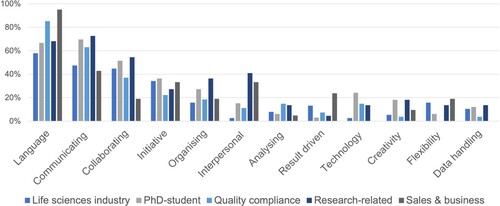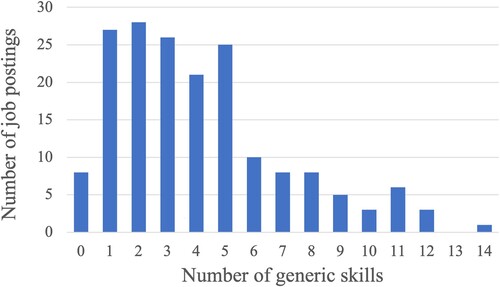Figures & data
Table 1. Overview of requested previous education: domain and degree.
Table 2. Codebook based on the categorisation of Dunne (in Bennett et al., Citation1999) with the generic skill name and the illustration in terms of ‘student is skilled in’. An asterisk (*) denoted an additional generic skill to the categorisation, a circumflex accent (^) indicated that a generic skill was placed in a different management of-category.
Table 3. Nine career paths including their abbreviations, illustrations, and prevalence.
Table 4. Prevalence of the four generic skills categories requested at least once in the total number of job postings (N = 179) with the highest occurring generic skills for each category.
Figure 2. (a–h). Seven cluster compositions of the management of self (top left), management of others (top right), management of information (bottom left), and management of tasks (bottom right) categories. Striped blocks indicate an ‘indifferent’ category, where both job postings including and excluding this category are part of the cluster.

Table 5. Cluster prevalence and composition interpretation, where X represents the generic skills category being part of the cluster. X between brackets indicates an ‘indifferent’ category, where both job postings including and excluding this category are part of the cluster.
Table 6. Prevalence of the seven generic skills clusters in the five most often found career paths: life sciences industry (LSI), PhD-student (PhD), quality compliance (QC), research-related (RR), sales & business (SB).
Figure 3. Percentages of the five most often found career paths and the top ten requested generic skills.

Figure 4. Percentages of the top ten requested generic skills in the five most often found career paths.

Table 7. Percentages and ranking of job postings requesting the overall top ten generic skills for the five most often found career paths.
Supplemental Material
Download Zip (218.6 KB)Data availability
Data is available in the repository via https://figshare.com/projects/Generic_skills_in_Life_Sciences_careers/155255

